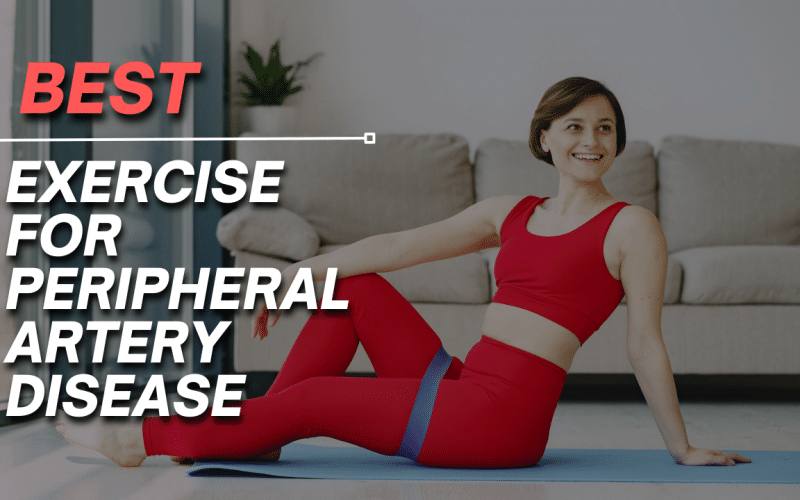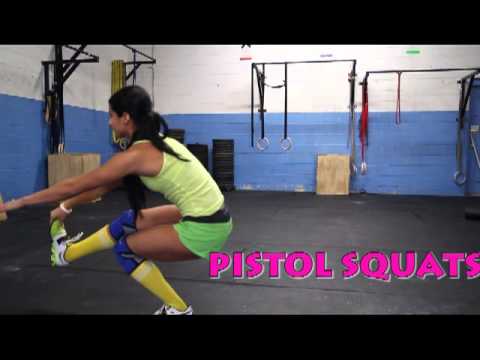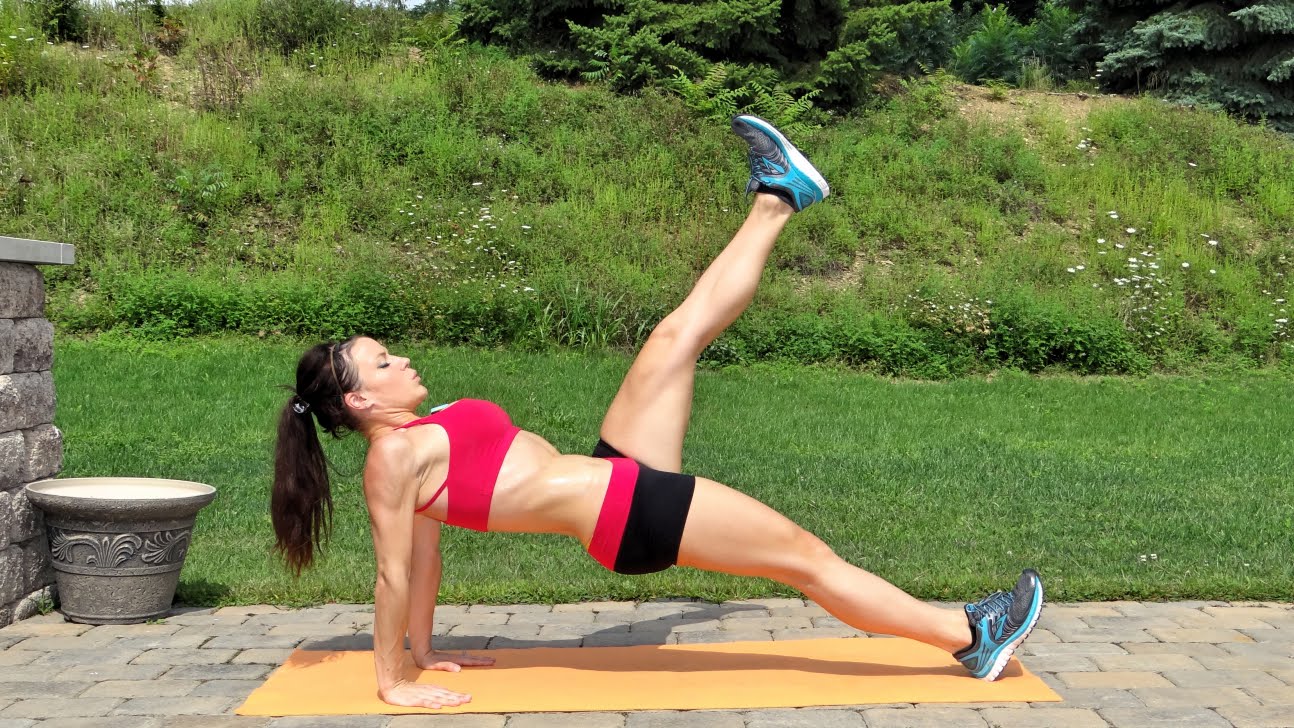When pain, weakness, and cramps make walking uncomfortable, it might be more than just old age setting in. Over 220 million people are affected with peripheral artery disease (PAD) globally, and most refrain from exercise.
Quite ironically, exercise and regular physical activity will help PAD patients reduce the risks of any cardiovascular event and disability. As surprising as that may sound, read on to learn the nine best exercises for peripheral artery disease.
Understanding Peripheral Artery Disease
PAD is a peripheral arterial disease resulting from plaque buildup along the walls of arteries. The narrowed arteries lead to reduced blood flow to your lower extremities and cause leg pain (claudication pain).
Patients with PAD experience cramping or muscle soreness in their legs during movement, like walking or climbing stairs, or in their arms while doing manual tasks like typing or writing. This discomfort goes away following a few minutes of rest.
Some of the common PAD symptoms include, but aren’t restricted to:
- Leg numbness or weakness
- Weak pulse in your feet or legs
- Skin too cold to touch in your lower leg or foot
- Severe pain or cramps in one or both calves, thighs, or hips
- Hair loss
The common risk factors include obesity, diabetes, high cholesterol, high blood pressure, old age, atherosclerosis, family history, and cigarette smoking.
The diagnosis of PAD involves the non-invasive ankle-brachial index (ABI) test. The doctor will compare the blood pressure in your arms and ankles at rest and post-exercise.
Additional tests like computed tomographic angiography, magnetic resonance angiography, and ultrasound help confirm PAD.
Medications and supervised physical exercise help manage PAD symptoms based on the progression.
Benefits of Exercise for Peripheral Artery Disease
Most people with PAD also have other cardiovascular risk factors (like hypertension) that can be modified with exercise programs.
While the magnitude of the potential benefits may vary among individuals with PAD, the following are some of the exercise benefits:
- Enhanced walking and stair-climbing ability
- Lower limb amputation risk (especially for those with diabetes)
- Improved aerobic capacity (that reduces the body’s dependence on anaerobic metabolism during physical activity)
- Increased muscular strength, flexibility, and endurance
- Potential increase in leg blood flow
- Improvements in other cardiovascular disease risk factors (like diabetes)
- Reduction in blood viscosity (thickness)
9 Best Exercises for Peripheral Artery Disease
As strange as it may seem for PAD patients to have to exercise, it helps increase the blood flow and significantly improve the PAD symptoms. Exercising for about 30 minutes 3-4 times a week is recommended.
Exercise therapy is known to increase pain-free walking distance by 180%. It also helps improve cardiorespiratory fitness and the quality of life of PAD patients.
Keep in mind the following before you get exercising:
- Choose the proper footwear: A thick pair of moisture-wicking socks and supportive shoes that fit properly for comfort during workouts. Avoid compression socks.
- Warm-up: To avoid any sports injury, stretch your thigh and calf muscles on each side for 10-15 seconds.
1. Interval Walking
Walking exercise at an intensity that induces ischemic leg pain (resulting from restricted blood flow) will improve walking performance, both distance and time.
Supervised treadmill exercise and home-based walking exercise help improve walking ability in PAD patients. Clinical trials have shown supervised walking exercise to improve maximal walking distance by 180 meters and 128 meters of pain-free walking distance.
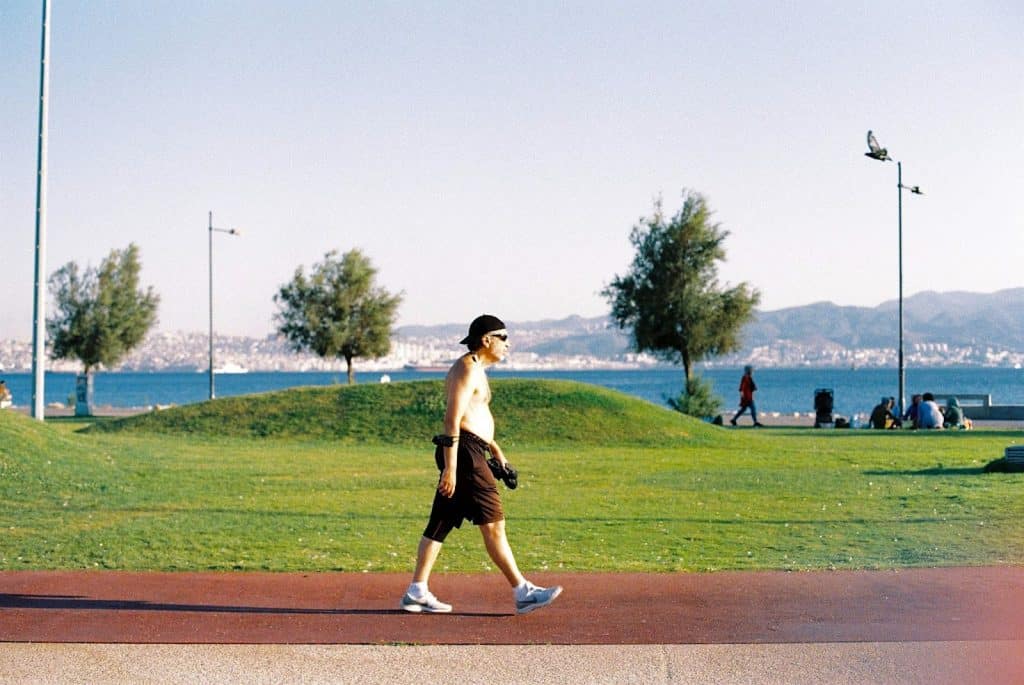
Interval walking, whether done outdoors or on a treadmill, will improve walking ability in people with PAD. It’s a low-impact workout to raise your heart rate and increase mobility and blood flow over time.
Here’s how you can do the interval walking exercise:
- Start walking at a good pace for about five minutes, even if it causes mild pain.
- Stop and rest until the pain goes away.
- Repeat this walk-and-stop routine several times.
- Cool down and finish off by walking slowly for about five minutes. Stretch your thigh and calf muscles again once you’re done.
Start with short distances, preferably a path with intermittent low-rise inclines or on a treadmill. Slowly build up to a walking time of 35 minutes (excluding the rest breaks) over the first two months.
Continue increasing the time till you’re able to walk 50 minutes. Eventually, aim for the same at least 3-5 times a week. Gradual, tolerated increases in exercise intensity within the same interval length provides significant fitness benefits.
When you’re comfortable with this, take it up a notch by walking up stairs or hills, or add an incline to your treadmill.
2. Chair Leg Raises
This is an excellent exercise for improving lower extremity functioning by increasing blood flow from your hips to your toes. You can do this while you’re seated comfortably.
To do chair leg raises, follow this procedure:
- Sit on a chair and keep your feet flat on the ground.
- Lift your left leg off the ground and extend it before you. Hold for five seconds and gently lower your leg.
- Repeat the same with your right leg.
In case of any discomfort, stop and rest.
3. Swimming or Water Training
Some PAD patients may find walking exercise interventions too strenuous. You can consult your physical therapist for water therapy, among other exercises.
Since your body weight reduces in water (to one-third of your actual weight), your legs won’t bear the brunt of your weight when swimming and water training.
You can start with peddling or walking in the swimming pool (equally effective in dealing with PAD).
When you can swim or engage in water training, the water resistance will help modulate your leg muscle movements and build up its own resistance against movement.

4. Supervised Exercise Therapy (SET)
Since patients with PAD are at high risk of medical complications during exercise, starting with a supervised exercise program in a clinical environment is ideal.
It involves clinical staff monitoring your vitals and ischemic leg symptoms before, during, and after the exercise training.
This effectively reduces PAD claudication symptoms and is conducted in a hospital or physician’s office. Each SET session typically lasts 30-60 minutes and includes therapeutic training programs.
The treadmill-based exercise regimens are the primary form of SET. You’ll be made to walk on a treadmill until you have mild to moderate pain after a five-minute warm-up.
Then, you’ll be instructed to relax until the pain subsides and start walking again. This exercise intervention aims to complete a 60-minute workout session, including the five-minute warm-up, break times, and cool-down periods.
5. Step-Ups
A step-up is a simple resistance exercise that will work your leg muscles and glutes. It does an excellent lower-body conditioning exercise and also helps improve balance and mobility.
You can use the staircase at home or the steps used in your therapy session.
All you need to do is move up a step with your left leg and then come back down with your left leg. After ten reps, repeat the same with the other leg.
6. Toe Walking
The toe walking exercise is highly beneficial to increase blood flow to your lower extremities while involving muscles in your feet and calves. It helps strengthen your lower leg muscles and your calf muscles.
Simply walk on your toes and the balls of your feet on a flat surface. You can do this at home with support near a wall or in group therapy by placing chairs in a circle and walking around them.
7. Calf Raises
Calf raises are an easy, low-impact way to strengthen your lower leg muscles and improve blood flow.
You can try the assisted standing calf raises at home, the gym, or even while traveling. All you need is some support to hold on to.
Here’s how to go about it:
- Stand straight and hold on to the back of a chair, a walking bar, or the wall for support.
- Raise your heels slowly, keeping your knees extended.
- Pause for a second when you can stand on the tips of your toes as much as you can.
- Slowly lower your heels back to the ground and return to the starting position.
- Repeat this until you experience discomfort.
- Rest for a while and do a few more reps.
Alternatively, if it’s extremely hard to maintain balance with the standing calf raises, you can start with the seated calf raises.
- Sit straight on a chair with your feet flat on the ground and shoulders back and down.
- Lift your heels off the ground while pushing down on the balls of your feet.
- Pause for a second and then slowly lower your heel back to the ground.
- Repeat this for a few reps.
- You can do both heels together or one at a time.
8. Chair Sit-Stand-Heel Raise Exercise
This exercise involves using a chair and incorporating standing heel raises. It helps improve knee mobility, balance, and coordination and strengthens the calf muscles.
It is recommended to do this with expert supervision. Here are the steps for this exercise:
- Sit on a chair without touching your back to the backrest.
- Stand up slowly and do a calf raise (you can keep another chair in front to hold for support).
- Lower your heels and sit down on the chair.
- Repeat this a few times. Stop if you experience any discomfort, and rest.
9. Resistance Exercise Training
Lower extremity resistance training can help improve treadmill walking performance in PAD patients.
Supervised resistance training is emerging as a promising alternative to supervised treadmill exercise in patients with PAD. You can use therapy bands in your resistance training routine on the recommendation of your physical therapist.
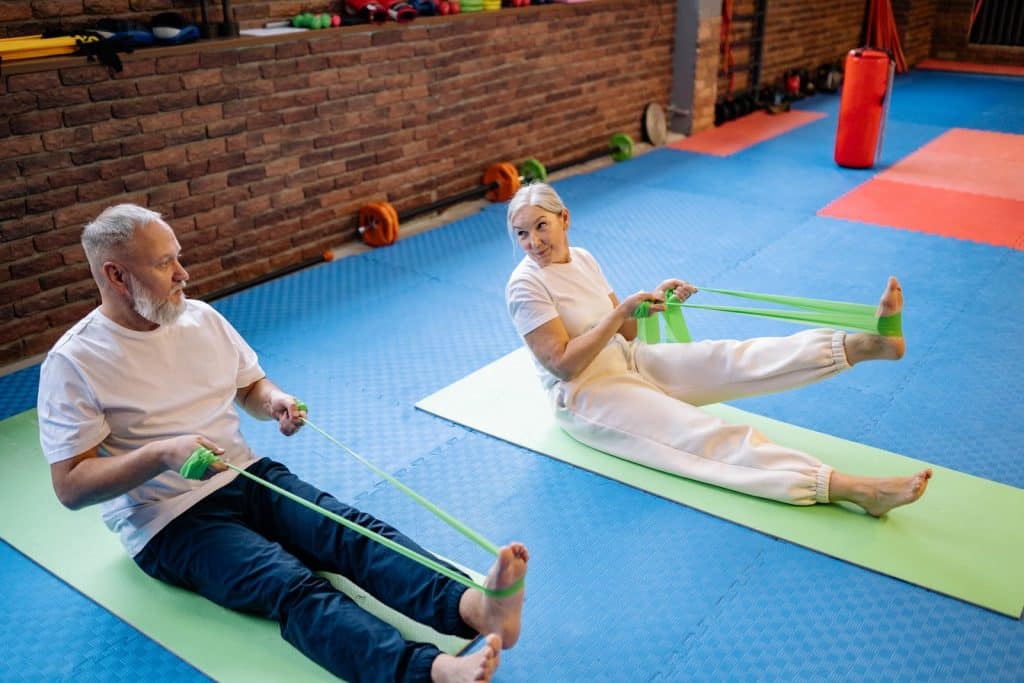
Some exercises you could try with a resistance band include hamstring curls, lunges, donkey kicks, abduction, and squats. It’s crucial to start this under supervision until deemed suitable to practice yourself at home.
Switching It Up
Apart from the exercises you just read about to help improve circulation, especially to the peripherals, you can also engage in any other type of exercise.
Consider using a stationary bike, an elliptical, doing mild yoga, eating a healthy diet and maintaining a healthy weight to get your blood pumping sans strain on your lower body.
Even with the alternative forms of exercise for PAD, the exercise session will involve interval training.
For example, in ergometry cycling, you will exercise for two minutes, followed by two minutes of rest, and repeat this about ten times (resulting in 20 minutes of exercise per session).
If you’re experiencing too much discomfort in your legs, consider concentrating on other body parts, like your upper body or core.
Exercises To Avoid
While people with PAD need regular physical activity, it’s vital not to overwork your heart. There are some exercises that you must avoid, like:
- Weightlifting
- High-intensity exercises
- Cycling
- Swimming
- Jumping rope
- Running
Depending on your condition, these exercises needn’t necessarily be problematic. However, it’s best to consult your healthcare provider to work out an exercise routine to suit you.
Live a Normal Life With Peripheral Artery Disease
Exercise rehabilitation is a non-invasive therapy that will help patients with PAD restore normal blood flow to their legs and avoid the need for surgical intervention.
Clinical trials have proven that PAD patients involved in high-intensity exercise at a pace sufficient to elicit ischemic leg pain showed significant improvement in their walking ability.
If you’ve just been diagnosed with PAD and starting with exercise sessions, it’s recommended to do so under professional supervision to avoid cardiovascular risks. Over time, the exercise benefits will show with improved walking endurance and cardiovascular fitness.
